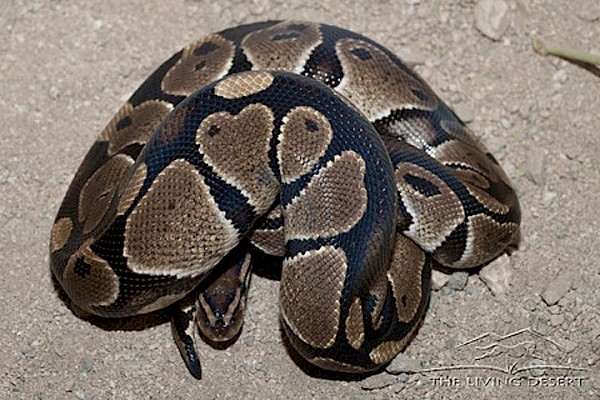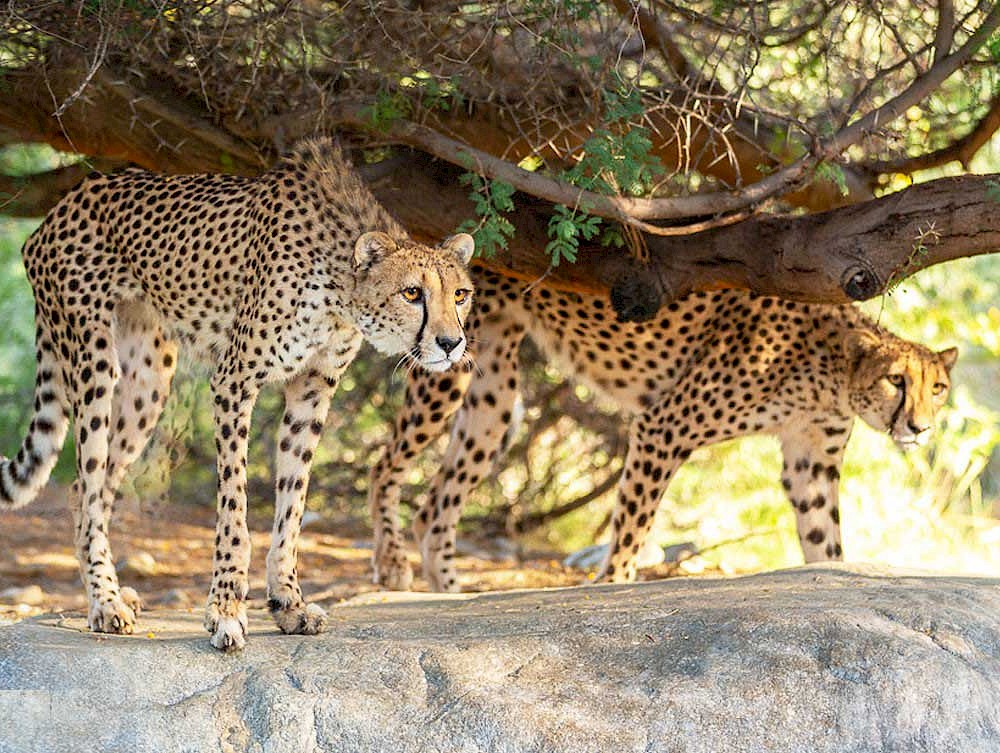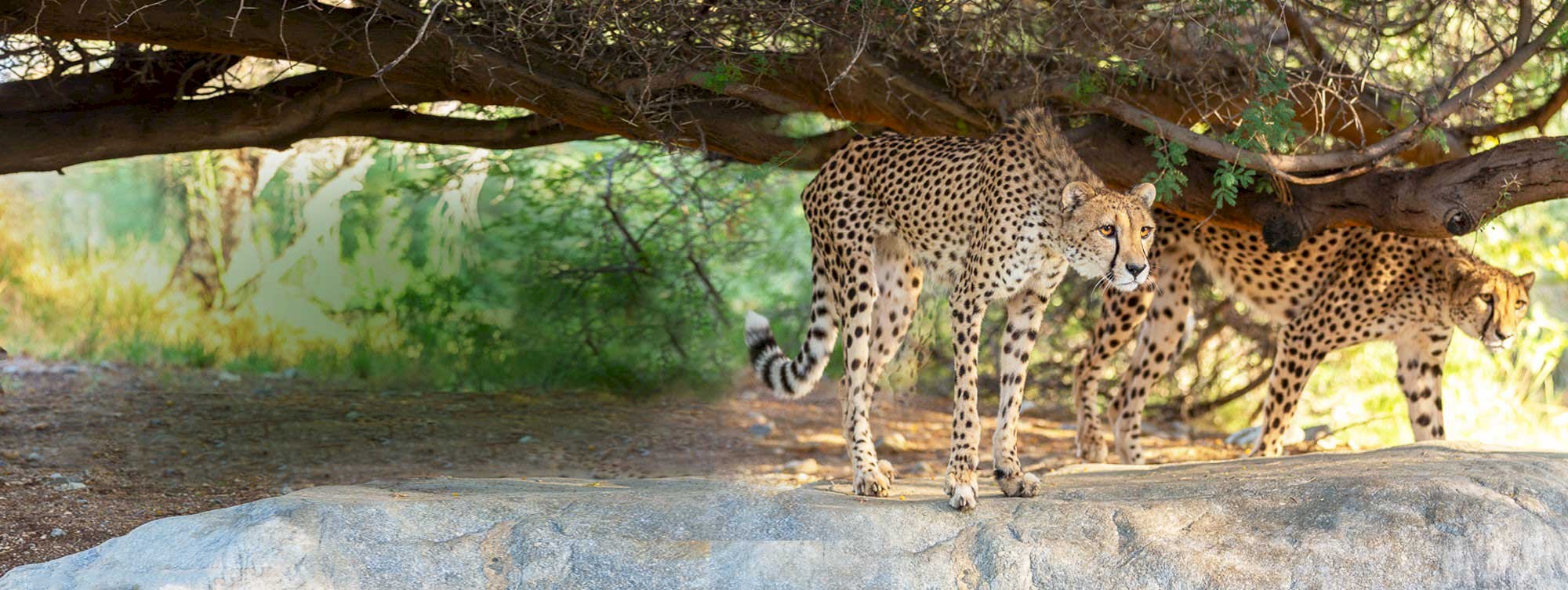

Ball Python
Python regiusFamily
Pythonidae, the python family.Conservation Status
NoneRange
Western to Central Africa.Habitat
Grasslands, savannahs and sparsely wooded areas with good cover near open water.Highlights
The spurs on either side of their vents are vestigial remains of the hind legs that snakes lost during their evolution from lizard to snake millions of years ago. Males have longer spurs than females.This is one of the smallest African pythons, ranging from 3-6 ft. long with a small head and a short tail. They are mainly chocolate-brown, patterned with many closely spaced, light brown, oval or kidney-shaped spots, edged with yellowish tan. Some of the patches may have a chocolate-brown center spot, also edged with a yellowish tan. There are four heat-sensitive labial pits above their upper lips on each side, located within each scale.
Their diet consists of birds, amphibians, lizards and various small mammals, which they catch by seizing them with their mouths and killing by constriction. They are active around dawn and dusk and spend most of their time on or under the ground in appropriated burrows, although they can climb.
Humans are their main threat. When disturbed or threatened, they throw themselves into a ball-like coil with heads buried in the middle.
They are oviparous. Four to eight huge eggs are incubated by females who thermo-regulate body heat by conspicuous muscle contractions, coiling around the eggs. The eggs swell during incubation which takes 56-64 days. They reach maturity in 3-5 years.









